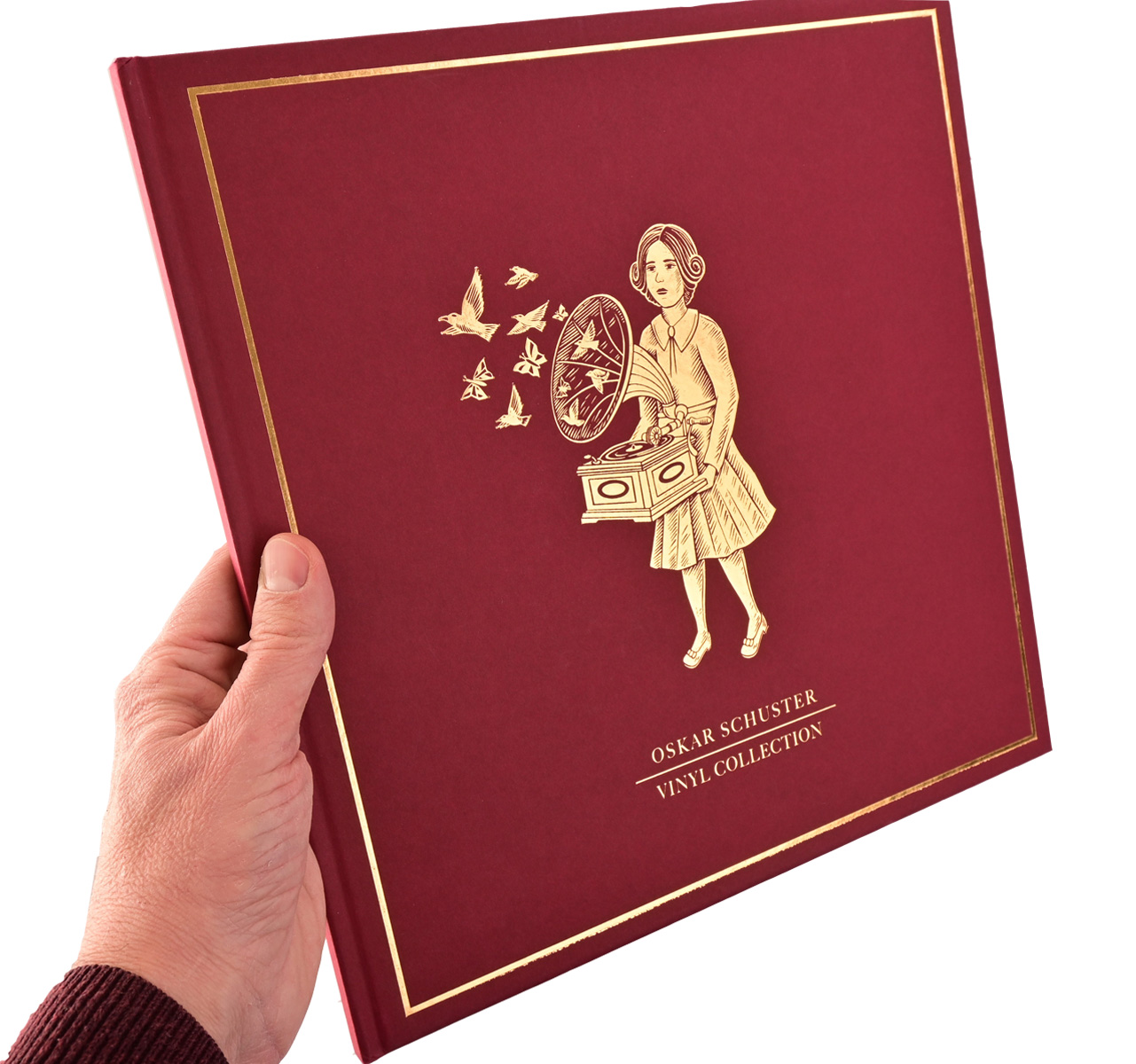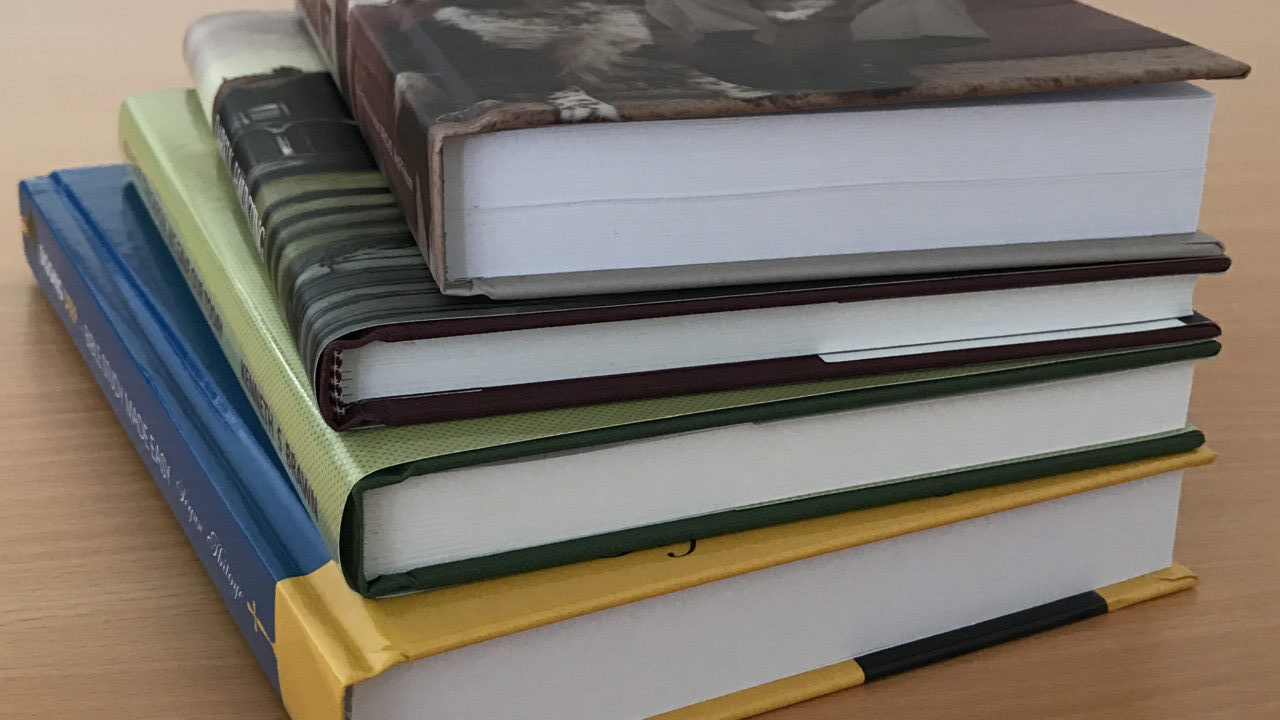Hardcover Books with the Best Reader Ratings
Hardcover Books with the Best Reader Ratings
Blog Article
A Comprehensive Guide to the Process of Hardcover Books Printing
When you start the journey of hardcover book printing, recognizing the whole process is necessary. As you navigate through binding and quality control, you'll find that every choice affects the book's general appeal.
Recognizing the Hardbound Book Structure
When you explore the globe of hardbound books, you'll rapidly discover that their framework is deliberate and distinct. The external casing, often constructed from durable cardboard, provides durability and security. You'll find a textile or leather covering, which not only enhances appearances however also adds to guide's durability. Inside, the endpapers link the cover to the text block, making certain a smooth interchange.
The text block itself contains several trademarks, or folded sheets, stitched with each other for toughness. You'll see that the spinal column is strengthened, permitting for a smooth lay-flat reading experience - hardcover books. Additionally, guide's weight usually conveys a sense of high quality and permanence
Hardbound publications typically feature a dust coat, which functions as an advertising device while securing the cover. Understanding these elements assists you value the craftsmanship behind hardcover books and their special allure in the literary world.
Manuscript Preparation and Modifying
Getting your manuscript prepared for printing is necessary, and it begins with proper formatting guidelines. You'll need to comprehend the modifying process to fine-tune your job and assure it reverberates with viewers. And also, understanding checking methods can assist you catch those annoying errors prior to your publication goes to publish.

Manuscript Format Guidelines
Correct manuscript format is important for producing a professional-looking hardbound publication. Begin by choosing a conventional typeface like Times New Roman or Arial in 12-point dimension. Use double-spacing throughout the paper to improve readability. Set your margins to 1 inch on all sides, providing your text area to take a breath. Number your pages in the top right corner, and include your phase titles at the beginning of each brand-new area. Usage clear headings to show sections, and prevent extreme format like vibrant or italics unless necessary. Make certain to check your manuscript for uniformity in vogue, guaranteeing that every little thing from spelling to spacing sticks to your chosen guidelines. Complying with these actions will certainly establish a strong structure for your book.
Editing Process Essentials
Modifying your manuscript is an important step that can change it from a harsh draft right into a sleek last item. Remember, editing and enhancing isn't simply regarding taking care of errors; it's about refining your voice and ensuring your message reverberates with visitors. Embrace the procedure, and you'll see your manuscript sparkle.
Proofreading Methods Introduction
When you have actually polished your manuscript through modifying, the following action is to assure it's totally free of errors that can sidetrack viewers. Read your manuscript out loud-- this helps you hear uncomfortable wording and area typos. Consider publishing your manuscript; analysis on paper can reveal mistakes that displays miss out on.
Creating guide Cover and Interior
When you're making your publication cover and inside, you'll intend to concentrate on necessary layout elements that capture your audience's interest. Selecting the appropriate typography styles and meticulously selecting colors and imagery can make all the difference in sharing your book's motif. Allow's explore exactly how these selections can elevate your work and draw in visitors.
Crucial Style Components
Developing an appealing publication cover and a properly designed interior is essential for bring in visitors and boosting their experience. Select shades and pictures that mirror your book's motif and mood.
For the inside, concentrate on layout and white area. A tidy, orderly layout assists viewers navigate easily. Take into consideration utilizing phase headings and subheadings to direct them via the content. Aesthetic elements, like graphics or illustrations, can additionally enhance interaction but must complement the text, not bewilder it. Remember, a natural design throughout your publication fosters a specialist look that can considerably impact a visitor's choice to select it up.
Selecting Typography Designs
Typography plays a vital duty in both guide cover and interior decoration, forming just how readers perceive your material. When picking typography styles, consider your book's category and target audience. A traditional serif font style may function well for literary fiction, while a modern sans-serif could fit a contemporary book. Guarantee readability; your message should be very easy on the eyes, especially for longer flows. Take notice of font size and line spacing, as these aspects influence overall circulation. Blending typefaces can add rate of interest, yet limit it to two or 3 to keep coherence. Lastly, think of hierarchy-- make use of different styles for headings and body text to assist readers effortlessly through your work. Your typography options will considerably affect the reader's experience.
Shade and Imagery Selection
Picking the ideal colors and imagery is necessary for catching visitors' attention and sharing your publication's themes. Beginning by considering your category; dynamic shades might benefit a kids's publication, while soft tones suit an enigma book. hardcover books. Usage imagery that reverberates with your material-- photos, pictures, or abstract designs can improve your message
When developing the cover, make certain the imagery does not overwhelm the title and writer's name; quality is essential. This cohesive approach not just boosts your publication's visual however also enhances the viewers's experience, making it a lot more remarkable.
Choosing the Right Paper and Materials
When choosing paper and products for your hardbound publication, it's vital to consider just how they'll influence the overall look of your job. Begin by selecting the appropriate paper weight; larger supply frequently communicates high quality and longevity, while lighter paper can create a more delicate touch. Consider the finish as well; glossy paper enhances images and colors, while matte can provide a sophisticated, understated look.
Towel, natural leather, or printed paper can set the tone for your publication. In addition, assume regarding the binding materials; making use of top notch sticky guarantees your publication lasts.
Eventually, the options you make here mirror your vision, reference so make the effort to sample different products (hardcover books). Your choices will aid produce a book that's not just visually enticing however also durable and useful
The Printing Refine: Methods and Technologies
A range of printing techniques and modern technologies can bring your hardbound book to life, each offering unique benefits. Digital printing is a prominent option for brief runs, permitting quick turn-around and economical services. When you require to publish smaller amounts without compromising top quality, it's ideal. On the various other hand, offset printing master web link producing large volumes, delivering regular and high-grade outcomes. This technique is excellent for considerable publications where color precision and great information matter.
Comprehending these strategies aids you make notified choices, ensuring your hardcover book not only looks fantastic however additionally fulfills your production needs successfully. Select the best method to boost your book's appeal and impact.
Binding Methods for Hardbound Books
Several binding methods can change your hardcover publication into a attractive and resilient item. One more method is the excellent binding, which uses adhesive to hold the web pages together, allowing for a sleek spine however much less resilience contrasted to instance binding.
You may also think about spiral binding, which permits your book to lay flat, making it ideal for workbooks or handbooks. However, it doesn't use the same protective cover as situation binding. There's the saddle stitch technique, ideal for smaller sized books, where sheets are folded and stapled together. Each binding approach has its benefits and fits different needs, so believe regarding your publication's objective and audience when choosing the very best choice for your job.
Quality Assurance and Last Touches
After choosing the right binding technique for your hardbound publication, quality control ends up being necessary to confirm your final product fulfills your expectations. Start by examining the printed pages for any type of mistakes or inconsistencies in color and layout. You do not wish to miss out on any kind of typos or misprints that might impact your readers' experience.
Next, examine the binding honesty. Validate the web pages are safely connected and that the spine is sturdy. A well-bound publication not just looks professional yet additionally feels long lasting in your hands.
Furthermore, take notice of the cover. Search for any type of scuff marks or misalignments in the artwork. If you've chosen unique coatings like embossing or aluminum foil stamping, ensure they're used constantly throughout all duplicates.
Finally, conduct a complete evaluation of the entire set before relocating to circulation. In this manner, you can confirm that every publication shows your high standards.
Frequently Asked Inquiries
Just how Lengthy Does the Hardcover Publication Printing Process Normally Take?

What Is the Minimum Order Amount for Hardcover Books?
The minimum order quantity for hardbound publications normally starts around 100 copies, but it can differ based upon the printer. You must talk to your chosen printing solution for helpful site their details needs and prices.

Can I Publish Hardbound Books in Customized Sizes?
Yes, you can publish hardcover books in customized dimensions. Several printing services offer versatility with dimensions, enabling you to select a layout that matches your task. Just confirm the specifications before positioning your order.
Exist Eco-Friendly Options for Hardbound Publication Printing?
Yes, you can locate environmentally friendly options for hardcover book printing. Many companies use sustainable inks and recycled products. Simply ask your printer concerning their environment-friendly techniques to assure your task straightens with your ecological worths.
What Are the Expenses Related To Hardcover Book Printing?
When considering hardbound publication printing expenses, you'll need to consider products, design, and printing methods. Added expenditures like delivery and binding can likewise impact your overall spending plan, so strategy as necessary for your job.
When you begin the journey of hardbound publication printing, comprehending the entire process is essential.A selection of printing strategies and innovations can bring your hardcover publication to life, each offering special advantages. How Lengthy Does the Hardbound Book Printing Process Typically Take?
The hardbound book printing process generally takes around 2 to 6 weeks.Yes, you can find eco-friendly alternatives for hardcover book printing.
Report this page